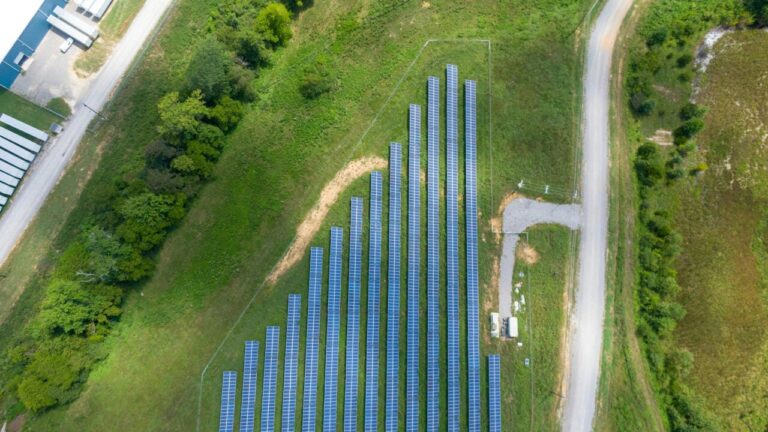The UK solar industry was recently awarded 4.5 GWp-dc across 93 sites in allocation round 6 (AR6) of the Contracts for Difference (CfD) programme, the highest capacity since the 2014 CfD scheme started.
The CfD scheme has been particularly beneficial to the sector. Solar energy projects were originally allowed to participate in the first CfD auction (AR1). However, solar was subsequently omitted in the subsequent AR2 and AR3 auctions. Solar returned to the AR4 allocation rounds in 2022, when sites with a total of 3.1 GWp were successful, followed by 2.7 GWp in the AR5 auction process in 2023.
Taking a closer look at the results of the three most recent auctions, we can see from Figure 1 below that sites in the 50-100 MWp category account for the majority of capacity, with 60% in round 4 and 75% in round 5.
The main difference in the latest solar allocation round can be seen in the 25-50 MWp range, which received almost three times the capacity, compared to round 5.
Another striking difference in AR6 is in the range >100 MWp; in round 4, Cleve Hill won 150 MWp, just under half of the site’s total approved capacity. In round 6, two separate sites, each larger than 100 MWp, won contracts; Longfield and Little Crow will receive 420 MWp and 140 MWp respectively.
Figure 1: Capacity breakdown for different location size categories winning CfDs in AR4, AR5 and AR6 (the most recent auction).
Using details from the full site-specific audit trails included in the Utility Scale Solar – UK Pipeline Databasewe can investigate individual sites in much more detail than is apparent from the basic results published in the CfD pricing table distributed in the public domain.
The starting point is to identify all sites that have received funding. Since almost all applicants use the sites’ Special Purpose Vehicles (SPVs) for naming purposes, there is an immediate requirement to match all sites to the actual developer/site owners. This task was relatively easy to carry out, as SPVs are a core part of the site-specific audit trail methodology we have carried out on UK solar farms since the UK sector’s inception in 2010.
Two of the sites have already been completed, with a total capacity of 45 MWp, namely the Horsey Levels solar farm earlier this year.
There are currently nine sites under construction, with a combined capacity of 400 MWp, and a further two sites are nearing completion.
Looking at the 84 sites that have been approved but not yet under construction or completed, there are more than 30 projects that have met their planning conditions. Many other sites have signed contracts with EPCs, or have in-house EPC activities that will be involved during the construction process.
Looking at the developers (or site owners), there were 47 different developers involved in the contracts awarded; significantly more than in the past: 17 successful in AR4 and 22 in AR5.
Nineteen of these 47 developers previously received a CfD in previous rounds, implying that 28 new developers/owners won contracts in the recent AR6.
Current status of sites awarded contracts in AR5 and AR6
The projects awarded in AR4 are progressing smoothly: more than 700 MWp has been completed and another 950 MWp is currently under construction.
It is likely that 2025 will be another positive year; The awarded locations from the fifth round account for 850 MWp of capacity currently under construction, just under a third of the capacity won in the previous round.

Figure 2: Construction status of solar sites awarded contracts in the latest CfD allocation rounds.
Figure 2 highlights the delay in construction compared to the previous rounds, with more than half of the capacity allocated in AR4 starting construction within two years. AR5 follows a similar trend when looking at the results announced just over a year ago; approximately one-third of the total capacity allocated in AR5 is currently under construction, while another 750 MWp is at or near the ready-to-build phase.
Overall, it is clear that the recent CfD rounds have had a dramatic impact on the UK solar sector. Not only established developers continue to benefit from the scheme, but new stakeholders are also participating in the allocation rounds.
With AR6 seeing record UK solar capacity, this will certainly play a key role in the new UK government’s desire to prioritize solar as a technology, something that was sorely missing from the previous government’s rhetoric when it came to to the disintegration of solar energy. New energy sources are needed to replace fossil fuel sites.
Follow the instructions to access the full audit trails and status of all 93 locations awarded contracts in the recent AR6 auction here.


